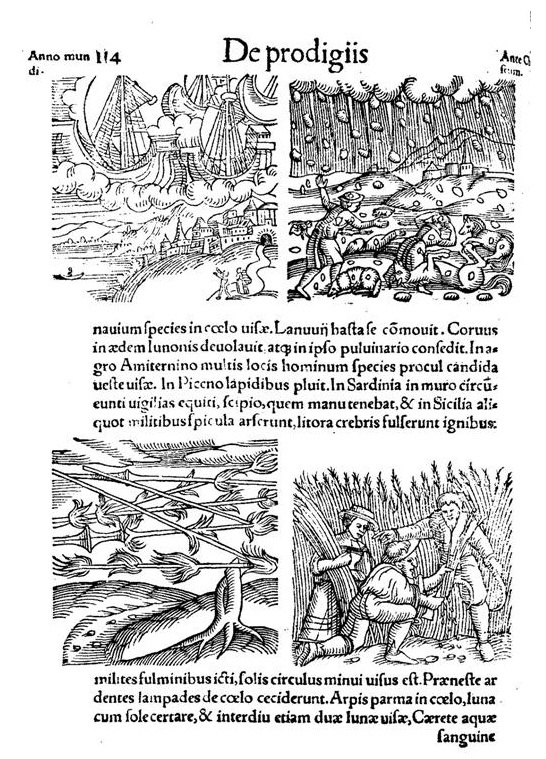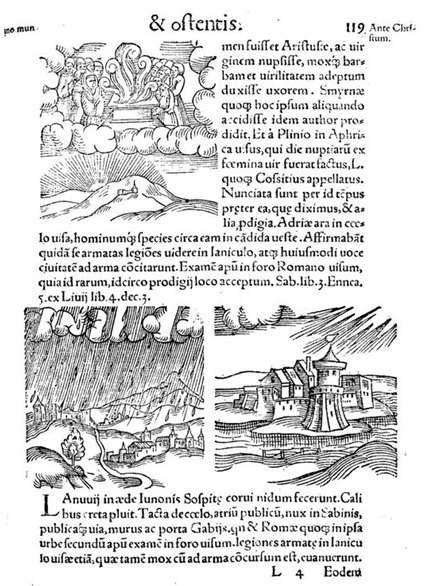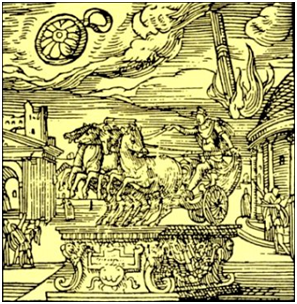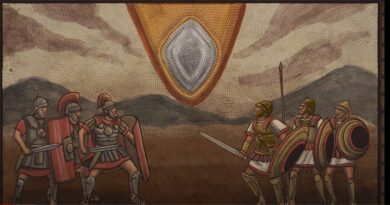Ufo tales in history
Early ufologist, here what they say
Story of UFO sightings: Sightings of particular phenomena in the skies have always been recorded since the dawn of time, chronicles of unknown flying objects have often been documented in history by many civilizations at every latitude and longitude of the planet for thousands of years.
Ufologists ante litteram we find them for example during the Roman Empire, how not to mention Tito Livio, Giulio Ossequiente and Plutarco.
Let’s read:
BC 218 Titus Livy, The history of Rome, Book XXI, Ch. 62
“..Et navium speciem de caelo adfulsisse ..”
Translation;
“.. A ghost fleet was seen shining in the sky …”
The same event is reported by Lycosthenes on page 114 of De Prodigiis (the ship is represented in the image at the top left);

BC 217 Titus Livy, The history of Rome, Book XXII, Ch. 1
“… et Arpis parmas in caelo visas pugnantemque cum luna solem […] et Faleriis caelum findi velut magno hiatu visum, quaque patuerit ingens lumen effulsisse ..”
Translation:
“… shields were seen in the skies, the sun was seen fighting with the moon … the sky seemed to open up, and a strong light was released from the opening ..”
Lycosthene reports the same event, and represents it thus (image above right);

BC 214 Titus Livy, The history of Rome, Book XXIV, Ch. 10
“Hadriae aram in caelo speciesque hominum circum eam cum candida veste visas esse.”
Translation:
“In Adria an altar was seen in the sky with men dressed in white around it.”
Lycosthenes also reports the event, on p. 119 de De Prodigiis (the image is the one at the top left);

BC 173 Titus Livy, The history of Rome, Book XLII, Ch. 2
“.. Lanuvi classis magnae species in caelo visae dicebantur ..”
Translation;
“.. It is said that in Lanuvio a large fleet was seen in the sky ..”
BC 174 Titus Livy, The history of Rome, Book XLI, Ch. 21
“.. et faces eadem nocte plures per caelum lapsae sunt ..”
Translation:
“.. and that same night torches were seen waving in the sky ..”
Pliny the Elder, in the “Naturalis Historia”, book 2, Ch. 33, reports the following event, dating back to 113 BC;
“Lumen de caelo noctu visum est, C. Caecilio, Cn. Papirio consulibus, et saepe alias, ut diei species noctu luceret. “
Translation:
“Under the consulate of Caecilio and Papirio, a night light was seen several times, expanding itself into the sky, strong enough to make the night, day.”
Giulio Ossequente in his “Prodigiorum Liber” ..
45. C. Mario L. Valerio coss. – 100 BC: “Fax ardens Tarquiniis late visa immediately lapsu cadens. Sub occasionu solis orbis clipei similis ab occidente ad orientem visus perferri. “
Translation;
“In Tarquinia a burning torch was seen suddenly descend. As the sun went down, a circular shield-like object was seen moving from west to east. “

Again in the Prodigiorum Liber by Giulio Ossequente, we find this event described in 91 BC, in Spoleto;
“In Spoletino the golden color globus ignis ad terram devolutus, maiorque factus and terra ad orientem ferri visus magnitude solem obtexit.”
Translation;
“In Spoleto a globe of golden fire descended to the ground and, becoming larger, it seemed to move towards the east, rising from the ground, and covering the sun by its size.”
In Plutarch’s “Lucullus”
“But presently, as they were on the point of joining battle, with no apparent change of weather, but all on a sudden, the sky burst asunder, and a huge, flame-like body was seen to fall between the two armies. In shape, it was most like a wine-jar, and in color, like molten silver. Both sides were astonished at the sight, and separated. [7] This marvel, as they say, occurred in Phrygia, at a place called Otryae. “
Translation;
“At the precise moment before entering battle, without any particular warning, all of a sudden the sky opened and a great luminous body fell among the armies, shaped like a kind of barrel, but the color of molten silver , the event was so shocking that both armies, alarmed, withdrew. This marvelous prodigy happened in Phrygia, near Otryae. “
Note that Plutarch does not claim that the object “crashed” to the ground, but rather that the object “stopped” on the ground. Also, there are no references to any kind of explosion or noise.
Subsequently Giulio Ossequente in his
Prodigiorum Liber argues that;
CXXIX. C. Pansa A. Hirtio coss. “Armorum telorumque species a terra visa
cum fragore ad caelum ferri.”
Translation:
“Some kind of weapons and lines were seen in the sky, which also made a
lot of noise from earth to heaven.”
As an image Giulio Ossequente reports;






